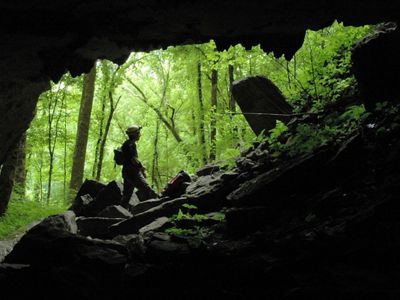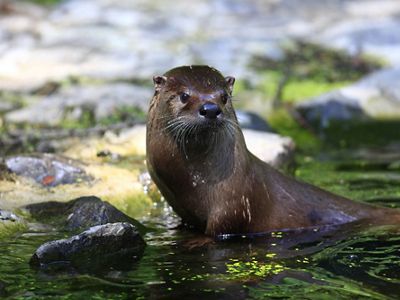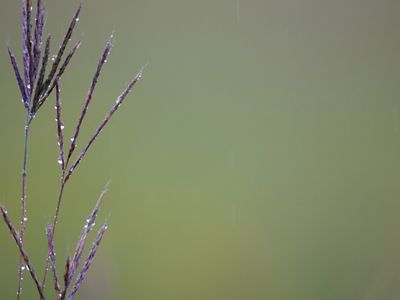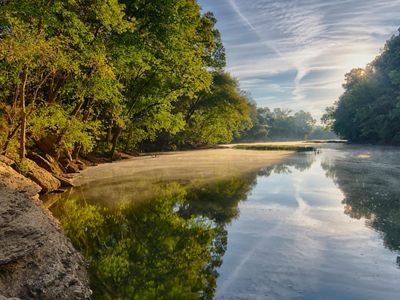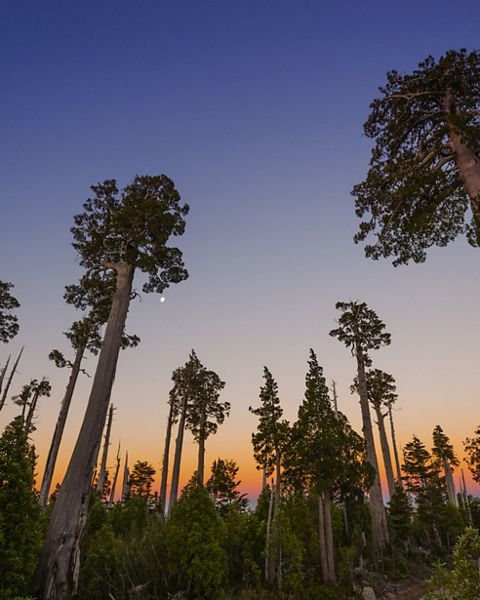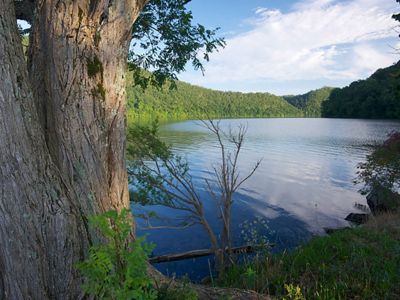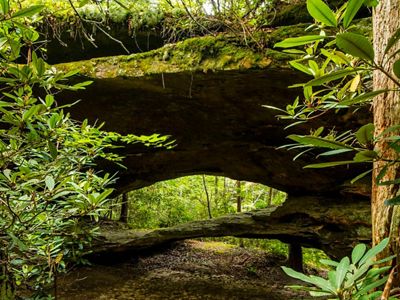Since 1978, The Nature Conservancy has protected more than 450,000 acres and worked to create or expand 36 state natural areas and state parks, 22 state Wildlife Management Areas, 5 national parks and forest service lands and 4 national wildlife refuges in Tennessee. This is in addition to establishing our own system of 16 nature preserves.
Conserving nature in Tennessee over more than four decades has provided the opportunity to cultivate skills that make it possible to pursue larger scale and more complex projects than ever before.
Time is of the essence. But we are up for the challenge. However, it is important to recognize the true urgency of our work in a world that is projected to have more than nine billion people by 2050.
Download
-
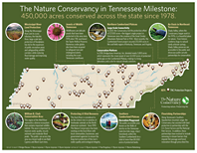 Conservation Wins
Conservation WinsThe Nature Conservancy has accomplished a lot since opening our doors in Tennessee in 1978.
DOWNLOAD
Protecting nature—and providing water, food and energy to a growing population—are no longer mutually exclusive goals. Addressing these together are paramount to sustaining life on Earth.
Can we design a future that meets people’s basic needs without further degrading the planet? Yes! But doing so will require collaborating across traditionally disconnected sectors within society, including public health, development and finance. Also, this work must occur at an unprecedented scale with little time to waste.
We look forward to sharing more with you about new partnerships and evolving ways of equally balancing the needs for food, water and energy with protecting nature. First, it begins organizing our work around the following four priorities:
- Protecting Land and Water
- Tackling Climate Change
- Providing Food and Water Sustainably
- Building Healthy Cities
See how we are doing in our annual Impact Report.
Tennessee Milestones

TNC purchased 4,138 acres at Savage Gulf State Natural Area from J. M. Huber Corporation and transferred to the state of Tennessee. Also acquired Taylor Hollow Preserve in Middle Tennessee. Transferred the 4,000-acre Bumpus Cove property in Washington and Unicoi counties to the Tennessee Wildlife Resources Agency to become part of the Cherokee Wildlife Management Area.
.jpg?crop=0%2C0%2C2304%2C1728&wid=400&hei=300&scl=5.76)
Purchased Jenkins Cranberry Bog in Shady Valley to protect Tennessee’s only native cranberry population. Donated the bog to East Tennessee State University for an outdoor research laboratory. Worked with partners to acquire a 133-acre tract to expand Nashville's beloved Radnor Lake State Park. Over the years, The Nature Conservancy has expanded Radnor Lake by purchasing and donating 280 acres of the now 1,300-acre preserve--over 20 percent of park.
1981-1990
The Nature Conservancy employed cutting edge science to pursue projects that would advance efforts to protect cave habitats and other natural areas.

Purchased Powell River Preserve (now a state natural area) to protect endangered plant species, and purchased the 40-acre Barnett's Woods where Price's potato bean was rediscovered after presumed to be eradicated in TN.
Purchased Hubbard’s Cave and the first 72 acres acres of what is today Colditz Cove State Natural Area, which features the spectacular 60-foot Northrup Falls. Also purchased 2,600-acre White Oak Swamp in Hardin County, a habitat for river otter and numerous waterfowl. It's now a state wildlife management area.

Installed a massive steel gate at Hubbard’s Cave to protect bat habitat. Received 1,100 acres for the protection of the Tennessee River Gorge from Bowater, Inc. Purchased the first 90 acres of the Vesta Cedar Glade in Wilson County for the protection of the endangered Tennessee coneflower. Acquired 12,262 acres for Chickasaw National Wildlife Refuge in West Tennessee.

Purchased Mount View Cedar Glade in Middle Tennessee to protect the endangered Tennessee coneflower’s site of discovery.
Purchased 3,100 acres from a Sunnybell Cedar Glade in Middle Tennessee and subsequently convinced Tennessee Department of Transportation to re-route a section of State Route 840 to avoid destroying the glade. Today it is a State Natural Area managed by the state of Tennessee.
Acquired the first 43 acres of Couchville Cedar Glade with financial support from American Airlines, Cracker Barrel and BellSouth. Today this cedar glade is a 122-acre State Natural Area that is contiguous with Long Hunter State Park near Hermitage, Tennessee.

Established the William B. Clark Conservation Area on the Wolf River near Memphis with a land donation from Buck Clark and his family foundation.
Began purchasing land at Flat Rock Cedar Glades in Murfreesboro; at 846 acres, it’s now the largest protected cedar glade in the Southeast. Today it is a State Natural Area and is open to the public. Also purchased Orchard Bog in Shady Valley in East Tennessee and soon launched mountain bog restoration efforts to benefit migratory birds, cranberries, and the endangered bog turtle.

Acquired Schoolyard Springs Preserve in Shady Valley to protect unusual artesian springs and several rare plant species, including Gray’s lily. Purchased the 65-acre Quarry Bog Preserve in Shady Valley to begin the second wetland restoration project to benefit bog turtles.
Opened community-based conservation offices on the Duck River in Columbia and on the Hatchie River in Brownsville. Burton Tally donated the 1,100-acre Tally Wilderness Preserve in Pickett County, adjacent to Pickett State Forest. William & Lee Russell donated 78 acres along Clifty Creek on the Roane/Morgan County line to form the Clifty Creek Preserve.
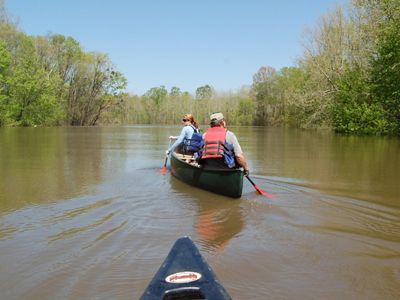
Opened an award-winning boardwalk at the William B. Clark Conservation Area. Purchased the 1,571-acre Jim Creek tract to become part of Pickett State Forest. Acquired 5,200-acre Carter Lands to constitute a portion of the Bear Hollow Mountain Wildlife Management Area. Purchased 1,063 acres and 161 acres on Millstone Mountain, both on the Hatchie River, to protect a unique geologic formation and associated rare plant communities.

Marked the protection of 200,000 total acres in Tennessee, including 11,800 acres purchased from the Anderson-Tully Corporation to create the John Tully Wildlife Management Area. The U.S. Geological Survey identified the Duck River as one of the most biologically rich rivers in the Southeast. Helped acquire 75,000 acres on the Cumberland Plateau to create the Sundquist Wildlife Management Area. Opened an office in Knoxville.

Worked with TNC in Alabama to protect the 21,000 Walls of Jericho. Protected 10,000 key acres connecting Great Smoky Mountains National Park and the Cherokee National Forest in a historic agreement with Alcoa Power Generating, Inc. and others. Secured $750,000 from Congress to purchase tracts along the Obed Wild & Scenic River and $1.8 million to purchase tracts in the Lower Hatchie National Wildlife Refuge.

Purchased 3,000+ acres in Pogue Creek Canyon,, adjacent to Pickett State Forest. Philanthropist M.C. Davis donated Alexander Cave. Partnered with Tennessee Wildlife Resources Agency to create a State Wildlife Action Plan to pinpoint and tailor habitat protection for wildlife species. Secured $6.1 million in federal funds to construct the Duck Riverwalk. Purchased 200 acres in the Yanahli Wildlife Management Area on the Duck River in Maury County.
Marked the protection of 220,000 acres in Tennessee. Used funds donated by M.C. Davis to acquire Bellamy Cave for TNC and the State of Tennessee. Installed a bat-friendly gate at Hubbard’s Cave. Purchased 2,569-acre Dry Branch Creek from International Paper to protect an endangered Tennessee yellow-eyed grass population and 4,208-acres on Skinner Mountain. Doubled the size of Orchard Bog Preserve in Shady Valley.
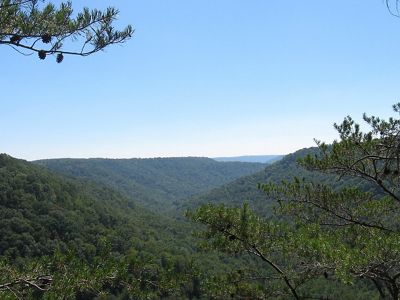
Reached a $14 million goal for TNC's first capital campaign in Tennessee. Teamed up with the State of Tennessee and two timber companies to complete the largest conservation transaction in the state since the creation of the Great Smoky Mountains National Park. "Connecting the Cumberlands" protected 127,854 acres, links to 66,000 acres of public lands and expanded Frozen Head State Park & Natural Area.
_Ryan_Kennedy_4000x2200.jpg?crop=533%2C0%2C2933%2C2200&wid=400&hei=300&scl=7.333333333333333)
Protected five and half miles along one of the richest mussel shoals on the Duck River in a conservation easement with Allen Dairy in Marshall County. Collaborated with The Hermitage, President Andrew Jackson's historic home, to clean up a massive sinkhole filled with decades of trash. Removed more than 60 tons of garbage and restored and replanted the area.

Helen and Fred Stone donated 66 scenic acres along the Obed Wild and Scenic River to create the Stone Preserve. Also expanded the Clifty Creek preserve to more than 80 acres with a donation from Doris and Albert Clark. Expanded the Shady Valley preserve's bog habitat by 26 acres, bringing the total of restored wetlands in Shady Valley to more than 140 acres.
2011-present
Over 40 years, The Nature Conservancy has cultivated skills that make it possible to pursue larger scale and more complex projects than ever before.

The U.S. Fish and Wildlife Service announced that the Tennessee coneflower would be removed from the Endangered Species List. Concluded two successful, multi-year programs with farmers and other landowners to improve habitat around streams that feed into the Duck River., bringing more than $2 million to improve water quality for people and nature.

Worked with the State of Tennessee worked together to purchase Doe Mountain, an 8,600-acre, richly forested tract in Johnson County, to be public park land. Built the world's first artificial cave for hibernating bats as a way to combat white-nose syndrome, an epidemic that has killed millions of bats across the U.S. and Canada. The cave is an experimental prototype. If successful, it can be replicated nationwide.
Acquired 4,000 acres of mountain forest along the Little Tennessee River from Brookfield Renewable Energy Group. These lands connect the Great Smoky Mountains National Park with the Cherokee National Forest. We call this historic project "Bridging the Smokies."

Purchased 63 acres of cliff-top property along the Obed Wild & Scenic River, the protected corridor of lands and waters managed by the National Park Service. The acquisition preserves the broad bluff that can be seen directly across from the National Park Service's popular Lilly Bluff Overlook platform.
Working with Bat Conservation International, co-funded breakthrough research on treatments for White Nose Syndrome in bats. Initial trials led to 75 bats healed and released to the wild. Purchased 16.7-acre property adjacent to Big South Fork. The Gil & Summerfield Johnston Preserve contains a rare double arch of sandstone and other scenic features.
.jpg?crop=170%2C0%2C2666%2C2000&wid=400&hei=300&scl=6.666666666666667)
Enrolled our first Tennessee property in TNC's Working Woodlands program, which helps preserve private landowners' forests while allowing the owners to generate income through Forest Stewardship Council® (FSC) C008922 (FSC) certified timber management and the carbon sequestration market.
.jpg?crop=226%2C0%2C3546%2C2660&wid=400&hei=300&scl=8.866666666666667)
The largest dam in Tennessee ever removed for river restoration purposes--the Roaring River Dam in Jackson County--was removed by TNC and partners including the Tennessee Wildlife Resources Agency, the Army Corps of Engineers, the Southeast Aquatic Resources Partnership, the U.S. Fish and Wildlife Service, and the Tennessee Department of Environment and Conservation.

Accepted TNC's largest land donation in Tennessee when the Bridgestone Americas tire company donated its 5,800-acre Chestnut Mountain property. Now known as the Bridgestone Nature Reserve at Chestnut Mountain, this new preserve will open to the public once a public access plan and new trails are complete.

Organized the acquisition of 100,000 acres of forestland along the Tennessee-Kentucky border, part of a larger 253,000-acre acquisition in the heart of the Central Appalachians, a globally significant hotspot for biodiversity, a major North American migratory corridor and source of important watersheds.
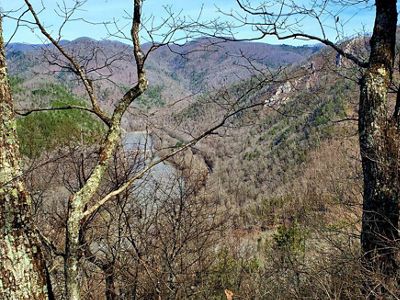
The Nature Conservancy marked the permanent protection of more than 400,000 acres since opening its doors in Tennessee with the purchase of 640 acres, together with The Conservation Fund, near Newport. The acquisition permanently protects 1.5 miles of French Broad River frontage from development and provides critical habitat for endangered bats and black bears.
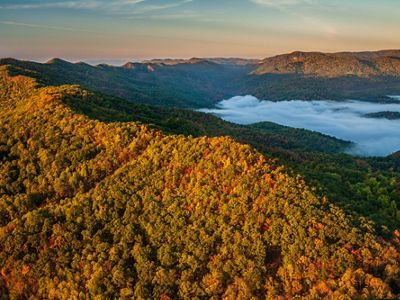
TNC’s Cumberland Forest Project sold a 43,000-acre conservation and public recreation easement to the State of Tennessee. This landmark conservation win marks the largest, State-owned, conservation easement in Tennessee.

